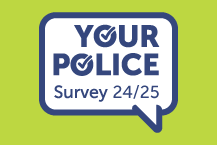Other Electronic Fraud types
Information about the various types of electronic fraud.
On this page:
Account takeover and phone redirection
Cold callers – eg Microsoft scam, PPI refunds
Account takeover and phone redirection
This is where the victim's phone company is contacted to temporarily redirect calls to a new number.
The fraudster, who has the victim's banking details, then makes transfers between the victim's account. Then make transfers to their own account.
Sometimes the victim's account has received loans. These have been applied for by the fraudster who then transfers the money to their own account.
Advanced fee fraud
This is a popular crime with organised crime groups based overseas.
They involve requests to help move large sums of money with the promise of a large share of the cash in return.
Business telephony fraud
This is a type of electronic fraud where a company's internal telecommunications system is 'hijacked' by criminals.
It is used either to redirect calls or to dial premium rate telephone numbers. The revenue from this is then paid to the criminals.
By using autodialler programmes, the criminals can make multiple calls at the same time. Each call makes money, sometimes thousands of pounds before the fraud is detected.
Cold callers – eg Microsoft scam, PPI refunds
Computer repair scam – this scam is usually from fraudsters based overseas.
The fraudster telephones the victim at random. They then tell them they are from Microsoft or another similar company. They tell the victim that they have viruses on their computer.
The fraudster asks for access to the victim's computer. They then spend a lot of time (sometimes up to 2 hours) on the phone whilst interfering with the victim's computer.
After some time the fraudster requests bank details to make payment for the work they have done.
They have not done any work but may have copied files and gotten personal information.
PPI refunds - again it is believed this is generally conducted from overseas.
The victim gets a phone call from the fraudster telling them that they are entitled to a large PPI refund.
To get a refund, the victim is told they must first pay fees or taxes. The payments are usually requested via Ukash or a similar money voucher service.
False job offers
There are different kinds of this type of fraud. The most common is the fraudster advertising for a job position such a night porter, cleaner or mystery shopper.
The mystery shopper scam is advertised as a job on sites such as Gumtree. The victim is sent out forged travellers cheques or stolen bank cheques. They are then asked to put them into their own bank account.
Sometimes the funds clear without the forgery or the stolen cheque being noticed.
The victim is then asked to make a purchase somewhere such as Tesco with the funds. They are told to keep some of the funds and to send the remainder to the fraudster, often at a London address.
However, a week or two after the cheques have been lodged they are uncovered by the banking system and the victim can be left out of pocket.
Often the jobs are advertised claiming to be from local businesses.
Emails are sent out with application forms and requests for sizing for uniforms. The victim is often asked to send a copy of their passport.
The victim is notified that they have got the job and need to attend an induction or training course at some time in the future.
In order for the job position to be finalised the victim is asked to forward a sum of money (usually around £50 or £60) by Ukash voucher.
They must also pay for advanced background checks or administration. They are told this money will be reimbursed.
A week or two later, they realise they have been scammed.
Loan scams
The fraudster registers with loan brokerage site. Then when the victim enters their details into the site the fraudster offers them a loan.
The victims often have poor credit ratings and may be struggling financially.
The fraudster then requests various sums of money up front for administration fees etc and the victim never receives their loan.
Payment is often requested by online money voucher such as Ukash.
Paypoint scam
The fraudster telephones a business that processes Paypoint transactions. They then claim to be an engineer calling from Paypoint.
The fraudster tells the victim that there is a problem with the processing of Ukash vouchers. In order to fix the problem the fraudster gets the victim to carry out Ukash transactions. The Ukash numbers are then passed to the fraudster.
The fraudster then spends or launders the vouchers through money transfer sites or online betting sites.
This 'technique' has also been used in relation to Moneygram transfers.
Property let scam
There are two main types of this type of fraud:
1) the fraudster places an advert for accommodation on a site such as Gumtree.
Then when the victim responds to the advert the alleged property owner (the fraudster) is out of the country but will return to show the victim the property.
However, to prove his time isn't being wasted, the victim is asked to send money to a relative via Western Union and send a copy of the receipt to the fraudster.
The fraudster then takes the money and leaves the victim out of pocket.
2) the fraudster hacks into a genuine property letting website (usually for properties to let abroad) and intercepts customer emails.
The fraudster then passes himself off as the genuine property owner. They then get people to transfer money into their account.
Safe account fraud
This type of scam has become more common in recent times.
The victim receives a call from someone pretending to be calling from a credit card agency or the victim's own bank.
The fraudster tells them there's been suspicious activity on their bank account, To stop to stop any further loss, the victim should transfer all their money into a 'safe account'.
The fraudster then instructs the victim to hang up the phone and call the number on the back of their bank card.
The victim doesn't realise that the fraudster has kept the line open.
The fraudster, then pretending to be a bank official, provides the victim with details of the 'safe account'. They are then told how to transfer the money in their account.
The fraudster may request online banking information from the victim to carry out the transfer on their behalf.






